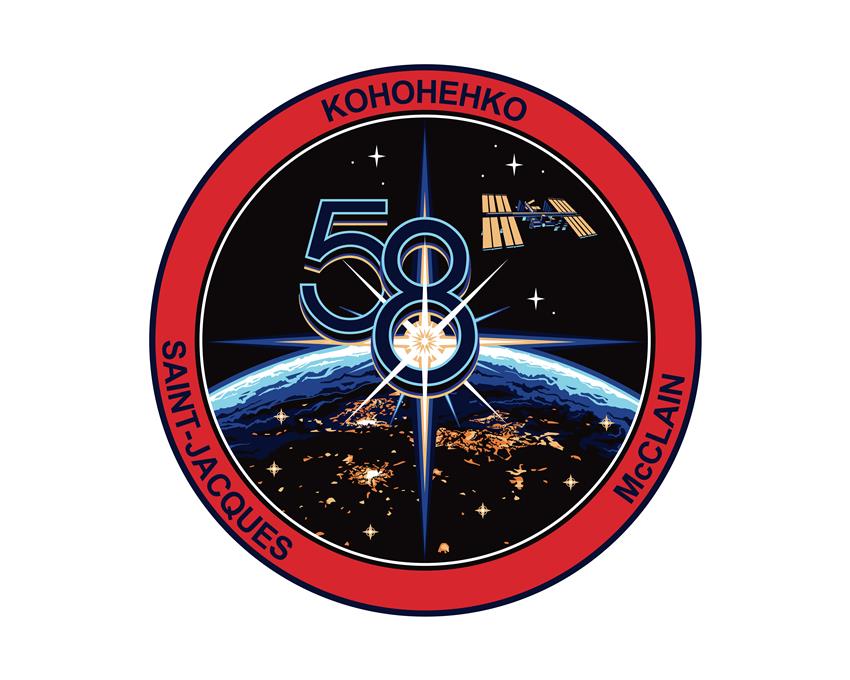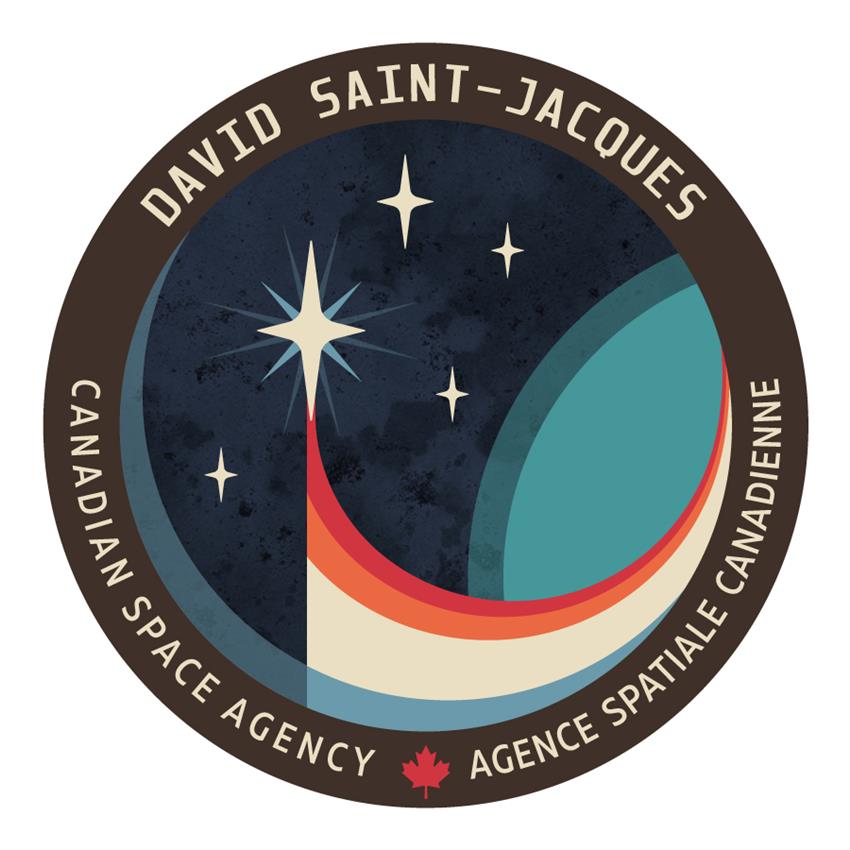Patch Maker, Patch Maker, Make Me a Patch
Background
Mission patches have long been part of space exploration culture. These emblems are worn by the people who are involved in a particular mission. For human space flight missions, astronauts determine the design of their own patch. A patch generally has three elements:
- Crewmember names: A crew patch will usually have the last names of all of the astronauts taking part in the mission. Although only astronauts' names appear, the patch is usually worn by most people involved in the mission, including ground crew and scientists. Above is the patch for Expedition 58. Canadian Space Agency (CSA) astronaut David Saint-Jacques and his fellow crewmembers decided what kind of imagery it would contain.
- Mission number: A patch will often (but not always) have the number of the mission on it. However, the mission numbers don't just start from 1 and keep going up! There are different types of missions, and they have been designated in different ways over time. Sometimes the patch features the name of the program and the number (e.g. Apollo 11). When the shuttle program began, the abbreviation STS was used, followed by the number (e.g. STS-42). STS stands for Space Transportation System. Currently, missions to the International Space Station (ISS) are referred to as expeditions (e.g. Expedition 58).
- An image that is representative of the mission: The image can represent an important aspect of the mission, a philosophy behind the mission, the nationalities of the crewmembers, and many other creative ideas.
In addition to a crew patch, CSA astronauts also have their very own personal patch. These patches are layered with meaning and have great significance to the astronauts.
For example, David Saint-Jacques' personal patch represents several elements that are important to him:
It represents the power of dreams. By igniting human creativity and genius, dreams lead to progress. It also evokes the central role that space exploration has played in the evolution of our perspective of life on Earth.
The North Star (dreams) and compass rose (reason) make up the central element of the patch. In the same way that these have provided direction for explorers, dreams guide and inspire us without becoming an end in themselves.
The trail of the star is composed of four colours. Red (energy and passion), orange (creativity) and white (science) stand for the human ability to innovate and push the limits of what is possible. The blue portion is crescent-shaped, resembling the reflection off a lens, and symbolizes the international collaboration so crucial to the space program in the past, present and future.
The other four stars represent the men and women who work behind the scenes, putting all their talent to work to ensure this Canadian mission is a success. They also signify the astronaut's family, the shining constellation of which he is most proud.
Finally, like a blue jewel in the universe, Earth figures prominently on the patch. From space, our planet can be seen in its full splendour but also in all its fragility. Space exploration gives us a new perspective on our world, fosters our environmental responsibility, and fuels our dreams of peace.
You can view all of the Canadian astronauts' personal patches here:
Mission description
It's time to get creative! This activity will consist of two parts. In the first part, participants will create their own personal patch, just like a Canadian astronaut. Participants must make sure that their patch conveys their interests, values, and perspectives. Next, divide participants into astronaut crews so they can create a crew patch. Remember the essential elements of a crew patch (listed in the background section of this activity), but also challenge participants to incorporate an element of their personal patch into the crew patch.
Timeline
| Breakdown | Duration |
|---|---|
| Introduction | 10 minutes |
| Part 1 | 30 minutes |
| Part 2 | 45 minutes |
| Wrap-up | 5 minutes |
| Total | 1.5 hours |
Goals
To activate participants' creative, teamwork and negotiation skills, and to reflect on individual and shared values.
Objectives
By the end of this activity, participants will be able to:
- Identify the key elements of a human space flight mission patch
- Create a personal patch that conveys their interests, values, and perspectives
- Negotiate with crewmembers to create a crew patch that is representative of the group while simultaneously reflecting elements of their personal patches
Mission preparation
Materials
- Paper
- Drawing/colouring/painting materials such as pens, colouring pencils, markers and paint
- (Optional) Design software
Mission instructions
Part 1
- Give participants a brief background on the history and elements of mission patches.
- Explain the significance behind David Saint-Jacques' personal patch (contained in the background section of this activity).
- Have participants design a personal patch.
- (Optional) Have participants explain their patch to the others in order to practise their public speaking.
- (Optional) Have participants take pictures of the patches and share them!
Part 2
- Divide the group into small astronaut crews and have them select a space mission and mission objectives.
- Have each crew create a crew patch that reflects not only their mission, but also elements from their personal patches.
- (Optional) Have crews explain their patch to the others in order to practise their public speaking.
- (Optional) Have crews take pictures of the patches and share them!


